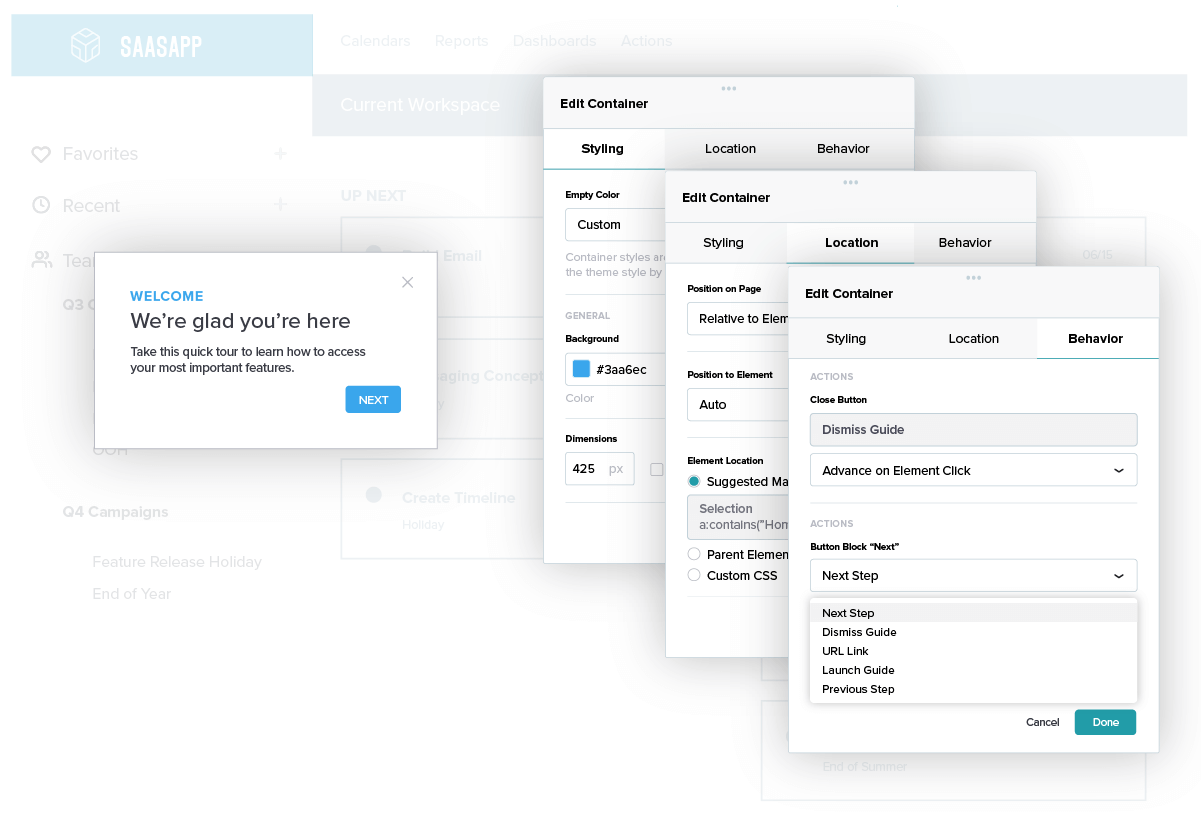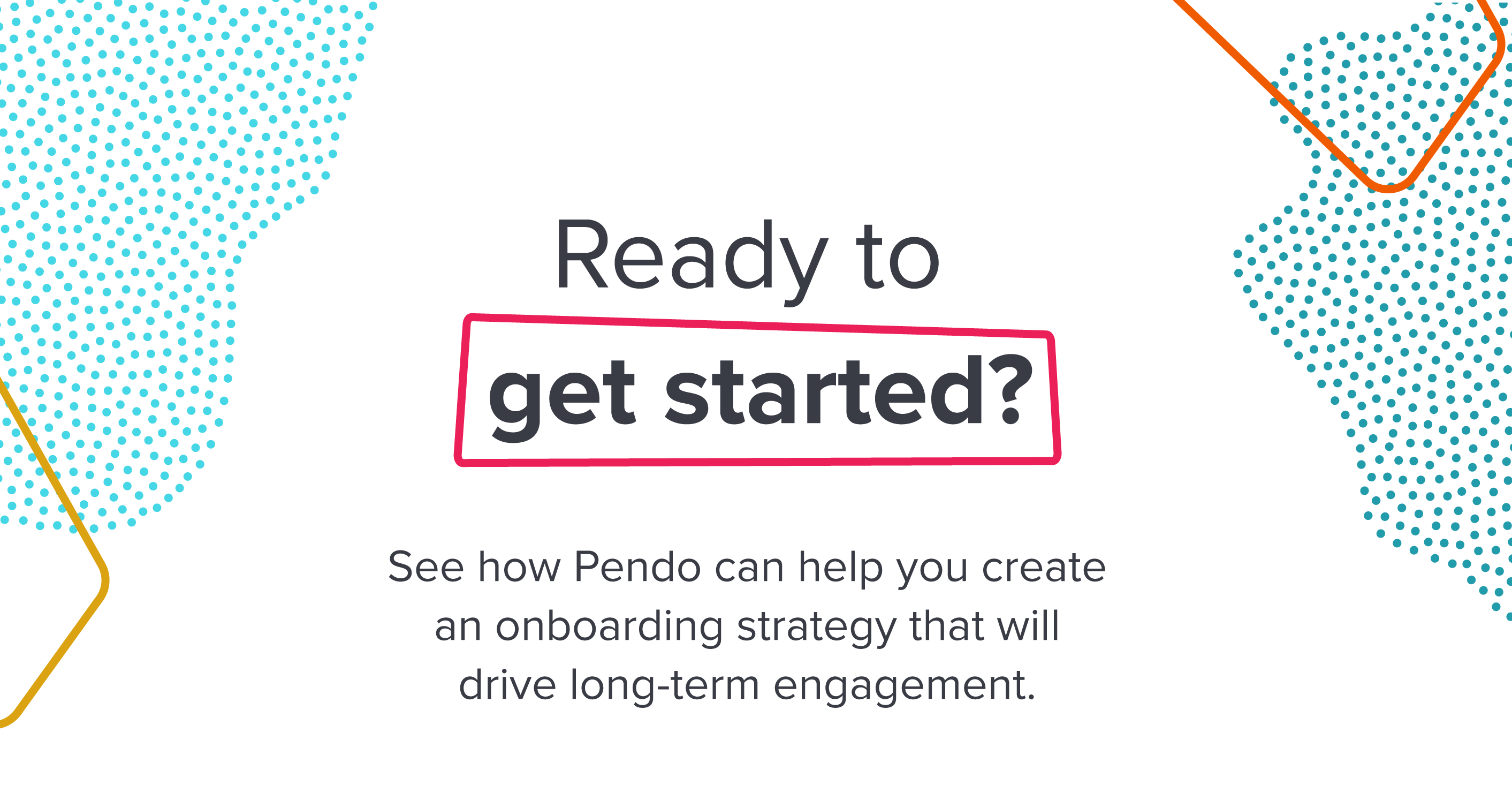
Inhaltsverzeichnis
In a rush?
Download the PDF for later
As we all know, first impressions matter. This is especially true for companies with software products, since it’s easier than ever for users to abandon a product if they no longer find it valuable — or fail to find it valuable in the first place.
In the spirit of imitation being the sincerest form of flattery, we’re sharing five examples of how our customers are using Pendo to deliver effective in-app onboarding. Although every company’s needs are different, from how user onboarding for startups aids in adoption or how enterprise companies manage success , we hope these examples serve as inspiration for your own onboarding strategy.
MagHub: Automating tasks
MagHub automates the most time-consuming onboarding tasks
The Product:
MagHub is an enterprise resource management (ERM) platform for the magazine publishing industry, including capabilities like marketing automation, customer relations management, project management, and data analytics. The company also makes Aysling, which is a general business ERM platform.
The Problem:
Since Aysling and MagHub are large platforms with so many different capabilities, it can be intimidating for new users to navigate the application. The customer success (CS) team spent too much time training new users on the basics, leaving them with little time to advise or offer information beyond standard functionality.
The Solution:
MagHub turned those basic instructions from the CS team into a series of in-app guides, which freed up the team to focus on user-specific consulting work instead. The experience begins with a guided introduction to the homepage that takes users on a tour of the most important steps for getting started, like how to set up their user profile and how to access additional support materials. Next, users see a “quickstart checklist” populated with more guided walkthroughs based on the individual’s specific role, and users can choose to view them as videos or walkthroughs in the application. Three days later, a reminder pops up and directs users back to the checklist to finish if they haven’t already.
Rolling out these automated onboarding flows for various parts of the platform allowed MagHub’s customer success team to operationalize the most time-consuming tasks, so they can spend more effort acting as consultants to their clients rather than instructors. The results? This approach cuts the time customer success spends on user onboarding in half, and improves customer retention: customers who complete the process are much less likely to churn.
ShippingEasy: Show rather than tell
ShippingEasy shows (rather than tells) new users what they need to know
The Product:
If you’re purchasing an item from one of the big e-commerce platforms, there’s a good chance ShippingEasy is helping them get it to your doorstep. The company’s platform helps online merchants automate shipping and fulfillment at the best rates possible.
The Problem:
Small independent online retailers don’t have much time to learn a new software — they’re too busy keeping up with all the incoming orders from across the web. ShippingEasy needed a better way to get their users up and running so they could see the value of the platform as soon as possible.
The Solution:
ShippingEasy uses a series of Pendo guides to walk users through the most important tasks in the app, for example with the tooltip flow below showing users how to set up orders in the platform. This way, customers can spend less time learning the platform, and more time fulfilling their own customers’ orders and making money.
Oranj: Boost app retention
Oranj guides users to success and boosts app retention
The Product:
Oranj is a financial services platform that streamlines investment management and client services for financial advisors, empowering them to build and scale their businesses instead of spending hours on cumbersome bureaucratic tasks.
The Problem:
Pendo’s product benchmarks report showed the Oranj team that they had a ways to go when it came to engaging and retaining customers during the first week of usage. After digging into product usage data, they identified that the problem happened during onboarding — a group of users were skipping over a welcome modal on first login, then getting lost in the app. Some would get so frustrated that they would leave the platform altogether.
The Solution:
Now, the welcome modal is presented to users at their first login and the experience is personalized to the individual’s particular use case, as they’re given a choice between two learning paths: managing investments and managing clients. Oranj also iterated on the modal over time to make it harder to avoid (e.g. by reducing visibility of the option to do so) and used product data from Pendo to identify the paths taken by their most successful users and then guide users through those paths. This not only leads to happier users, but keeping users engaged and driving them to success in the product also helps reduce churn.
SignalPath: Guide with video
SignalPath combines Pendo guides with video to revamp onboarding
The Product:
SignalPath’s platform streamlines complex clinical trials, improving the ease and efficiency of clinical trial execution by making it easier to track participants and data digitally. Making trials more efficient allows researchers to run more of them at once without significantly expanding their workforce.
The Challenge:
SignalPath’s onboarding experience consisted of a series of video tutorials hosted on the platform’s learning management system (LMS), but it was often difficult for users to find the right video for the task they were trying to complete. Not to mention leaving the app to go into the LMS and dig the videos out was time-consuming and distracting.
The Solution:
SignalPath wanted to deliver their onboarding content in-context — while users were navigating the application — but still wanted to use the video library they’d already invested time in creating. So, the company decided to embed the videos (via an integration with digital asset management platform Cincopa) inside Pendo guides to offer users video walkthroughs as they work in the app. This video-guide pairing targets users who are already digitizing clinical trial records in the platform, but need a refresher on how to do it. Offering ongoing in-application support based on the tasks users are performing lessens the training time necessary for new digitizers, which ultimately helps reduce frustration and drive customer satisfaction up.
Pi Datametrics: Educational onboarding
Pi Datametrics uses in-app onboarding as an ongoing education tool
The Product:
Pi Datametrics is a digital marketing solution that combines cutting-edge software, original data, and human intelligence to help companies track their own performance in online search and benchmark against their competitors.
The Problem:
The Pi team releases enhancements to existing features in its platform — and rolls out entirely new ones — on an ongoing basis. Previously, the company’s onboarding and support process consisted of a patchwork of documents, videos, face-to-face training sessions, and the occasional webinar. With so much manual effort going into training users on new features, support teams had less bandwidth to inform them about older features that are just as useful. Overall feature adoption was suffering, and the company needed a way to automate the onboarding process.
The Solution:
When Pi updated its Position Explorer Chart (the most popular tool in the application), it required a complete overhaul of the process for querying data through the feature. To help onboard new and existing users and drive adoption, the team set up a walkthrough to guide users through the new steps needed to use the feature. A guide that highlighted the first step (opening a collapsible element on the page) helped get users past an often-missed part of the process and on their way to success. In the end, users who learned to create reports, workspaces, and other objects in the platform through self-service onboarding were two times less likely to churn than other users who required more hands-on support.
